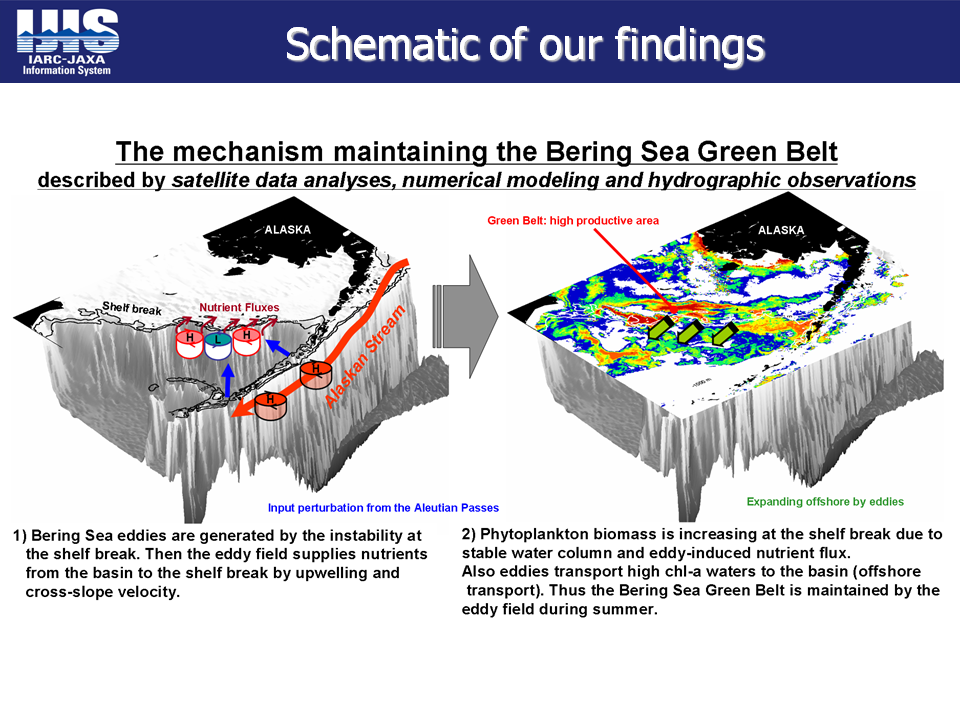| The Bering Sea shelf break area is known as "the Green Belt",
because of its high primary production (Springer et al., 1996, Fish. Oceanogr.).
It has been suggestd that eddies at the shelf break have something to do
with high productivity (from phytoplankton to walleye pollock). First we
did the hydrographic observations for eddies which was detected by satellite
altimetry and found high chlorophyll-a water at the edge of anti-cyclonic
eddy (Mizobata et al., 2002, PiO). Satellite multi-remote sensing also
revealed the high primary production area showed up when the eddy activity
was high at the shelf break (Mizobata et al., 2004, JMS) To elucidate the
mechanism generating and maintaining this high productive area, numerical
simulation was also applied to this region. Sensitivity analyses and tracer
experiments for eddy generation indicate that high nutrient flux from basin
to shelf occurs at shelf break when eddy is generated or eddy propagates
along the shelf break northwestwardly (Mizobata et al. 2006, JGR). To clarify
the cause of eddy generatgion is next step to be made. |
[Reference]
Mizobata, K., J. Wang, and S. Saitoh, Eddy-induced cross-slope exchange
maintaining summer high productivity of the Bering Sea shelf break, Journal
of Geophysical Research, 111, C10017, doi:10.1029/2005JC003335, 2006.
Mizobata, K., Saitoh, S-I., Variability of Bering Sea eddies and primary productivity along the shelf edge during 1998-2000 using satellite multi-sensor remote sensing. Journal of Marine Systems, Vol.50, Issue 1-2, pp101-111 2004.
Mizobata, K., Saitoh, S-I.、Shiomoto, A. Miyamura, T.、Shiga, N.、Imai, K.、Toratani, M.、Kajiwara, Y. and Sasaoka, K., Bering Sea Cyclonic and Anticyclonic Eddies observed during Summer 2000 and 2001. Progress in Oceanography, Vol 55, Numbers 1-2, pp65-75, 2002. |
